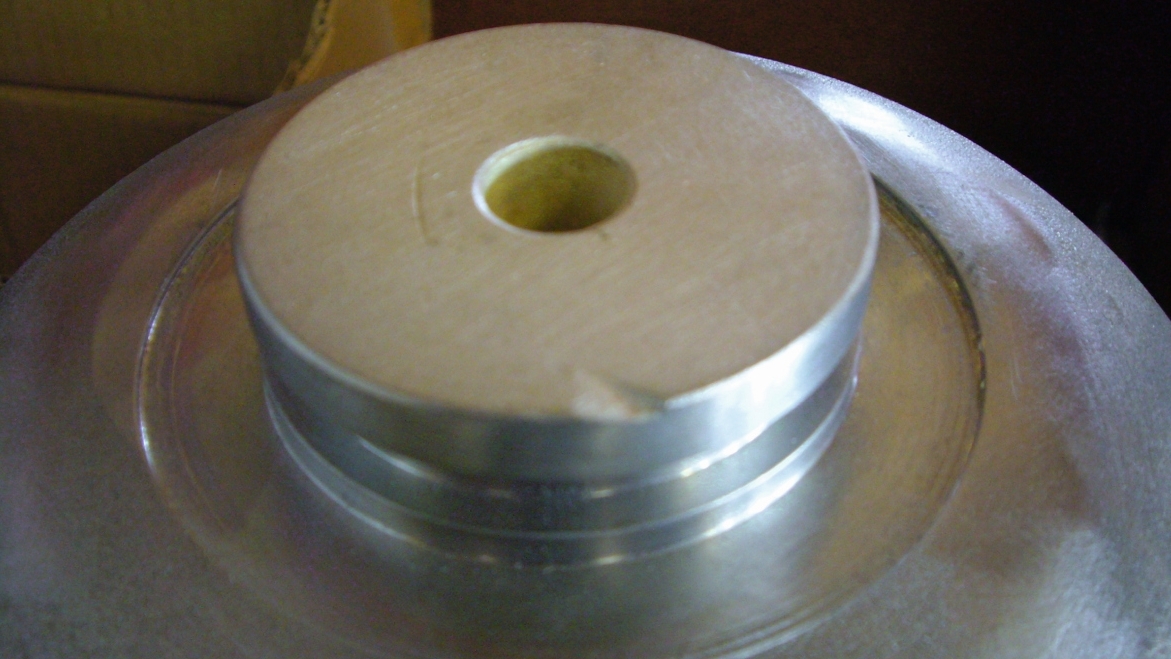Question: In addition to steel and non-ferrous metals, we galvanize aluminium, albeit to a limited extent. The rather small workpieces are fully nickel-plated, tin-plated and, in exceptional cases, chrome-plated. We are now receiving inquiries for partial coating of sometimes very large aluminum parts in larger quantities. Depending on the article, the dimensions far exceed our bath volumes. The idea of producing our own baths for such items is under discussion. We would cover the aluminum parts and only immerse them up to the coating depth. Can you give us some pointers for covering, pre-treatment, handling and process engineering so that we have a basis for a calculation and sampling?
 Covered aluminium parts after zincatepicklingAnswer: Galvanizing aluminium is a special challenge in itself. Compared to steel and non-ferrous metals, alloying and mechanical processing play a greater role in pre-treatment. The partial coating process is even more critical. If the parts can be classically dipped in a manual electroplating process or on an automatic machine, the requirements for coverage are very high. If this is not an option, the focus shifts to handling, particularly in the case of pad electroplating.
Covered aluminium parts after zincatepicklingAnswer: Galvanizing aluminium is a special challenge in itself. Compared to steel and non-ferrous metals, alloying and mechanical processing play a greater role in pre-treatment. The partial coating process is even more critical. If the parts can be classically dipped in a manual electroplating process or on an automatic machine, the requirements for coverage are very high. If this is not an option, the focus shifts to handling, particularly in the case of pad electroplating.
Since you already have experience with the electroplating of aluminium, we will dispense with the basics and concentrate on the specific approach to the above-mentioned problem.
Alloys
Smaller aluminum parts tend to consist of a relatively pure alloy. Larger components have very different compositions and casting types, which have a monumental influence on mechanical processing and galvanizability. Gravity die casting tends to have blowholes and pores, which can cause difficulties during electroplating, especially in combination with a high silicon content. In our experience, using the same alloy and casting technique from two different suppliers can lead to different results.
With such alloys, care must be taken during the pickling process. Excessive pickling can open pores and - depending on the pickling process - accumulate silicon on the surface, which makes electroplating even more difficult. To counteract these fluctuations, the surfaces to be electroplated are often blasted. Mud blasting processes are mainly used here. This results in a uniform surface with a comparatively low roughness.
Mechanical processing
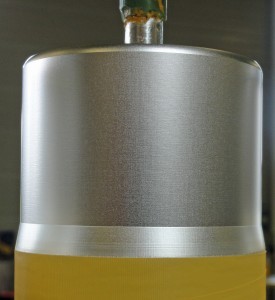 Partially silver-plated aluminium As a rule, such parts are mainly covered by a thick cast skin, partially painted and only the surfaces to be electroplated are exposed by mechanical processes such as turning and milling. All machining parameters have a major influence on the electroplating properties of such surfaces. Pressure, feed rate, coolant used, etc. determine how intensively pre-treatment is required and whether the coating is successful. For the mechanical processor, this does not matter as long as the requirements of the technical drawing are met. This is usually limited to dimensions and possibly roughness. An attempt is made to work as efficiently as possible within these parameters, which often leads to problems during electroplating. This means that identical workpieces from different processors can lead to completely different results despite adherence to the drawing.
Partially silver-plated aluminium As a rule, such parts are mainly covered by a thick cast skin, partially painted and only the surfaces to be electroplated are exposed by mechanical processes such as turning and milling. All machining parameters have a major influence on the electroplating properties of such surfaces. Pressure, feed rate, coolant used, etc. determine how intensively pre-treatment is required and whether the coating is successful. For the mechanical processor, this does not matter as long as the requirements of the technical drawing are met. This is usually limited to dimensions and possibly roughness. An attempt is made to work as efficiently as possible within these parameters, which often leads to problems during electroplating. This means that identical workpieces from different processors can lead to completely different results despite adherence to the drawing.
This knowledge initially plays a major role in the sampling process. The process must be clearly defined, communicated and documented from casting to electroplating. Good communication with the customer and all participants, usually subcontractors, in the process chain is important.
Covering
The two common techniques are bonding and painting. Which method is used depends on the following parameters
- Part geometry
- Part size
- Ratio of covering to galvanized surface
- Surface cleanliness (cleanness)
- Surface roughness
- Electroplating process technology
- cost
If possible, bonding is the first choice. The transition between the cover and electroplating usually has to be bonded with aluminum tape anyway. The technique is also quicker and adhesive tape is cheaper than paint. The more the geometry tends towards a spherical shape, the larger it is and the more it has to be completely immersed, the more likely it is that painting will be considered.
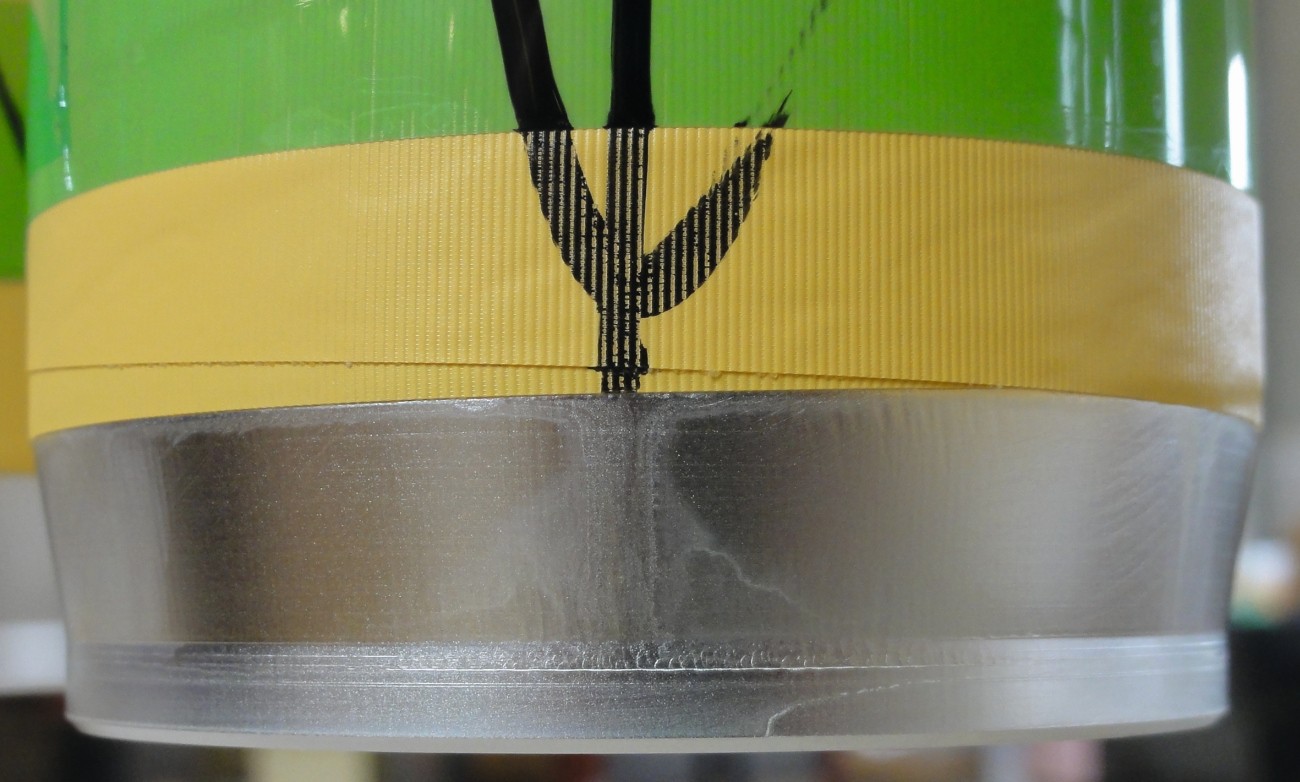 Problems due to insufficient coverage
Problems due to insufficient coverage
There are various paints and a plethora of adhesive tapes on the market for such purposes. Both have to adhere to the surface in order to survive the electroplating process. After electroplating, they should be easy to remove. The best cover is useless if it cannot be removed afterwards.
The adhesive strength of the cover depends on the roughness and cleanliness of the surface. In the best case, manual cleaning with a cloth and alcohol is sufficient; in the worst case, the parts must be cleaned in a cleaning system or degreased in the traditional way. Care must be taken to ensure that no chemical attack occurs on the surface. In addition, depending on the roughness and type of cover, too thorough cleaning can make it considerably more difficult to remove the cover.
The critical points are always the transitions. It must not come off here during the coating process, as chemicals can penetrate and cause various defects. For example, attack of the surfaces that are not to be coated or galvanization of the same. The chemicals can also leak out during the drying process and contaminate or even chemically attack the coating.
Choice of process
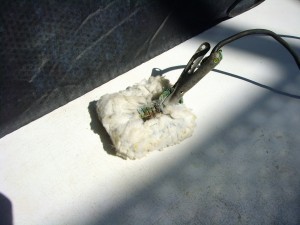 Self-made tamponsThereis a choice of dipping and tampon processes. In principle, pad electroplating is possible with all metals, but we advise against chrome plating as this represents a major risk in terms of the process - not to mention health protection.
Self-made tamponsThereis a choice of dipping and tampon processes. In principle, pad electroplating is possible with all metals, but we advise against chrome plating as this represents a major risk in terms of the process - not to mention health protection.
Which process is used depends on various factors. Part size and weight play the main role. As the workpieces do not have to be immersed during pad coating, the adhesive process is usually sufficient for covering. This does not have to be carried out over the entire surface, but only in the areas of the coating. This saves adhesive tape and time.
The pad process also has advantages for critical alloys, geometries or simply several small areas distributed over a larger workpiece. It can happen that different coating thicknesses or even coating systems are required on one part. You can coat these separately and, if done correctly, you will not even get a dog-bone effect. In addition, you can immediately see how the surface reacts during pre-treatment and can intervene accordingly.
If the quantities are very high, coating using the dipping process and therefore the additional work involved in covering pays off. Process reliability is also higher here, as this process sequence is easier to define and carry out. In both cases, however, you will not achieve satisfactory results without well-trained, conscientious employees.
Individual tanks are mainly worthwhile for larger parts that require a high layer thickness (> 30 µm).
Pad process
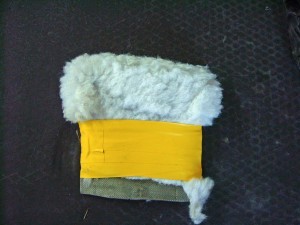 Sincewe understand from your question that you have no practical experience with this process technology, we would like to discuss it separately.
Sincewe understand from your question that you have no practical experience with this process technology, we would like to discuss it separately.
Different chemicals and electrolytes are often used for pre-treatment and coating than for classic electroplating. This is due, for example, to the fact that the pad process works almost exclusively with cold solutions. On the other hand, much higher current densities can be applied, which means that the coating can be applied faster than with most bath processes, despite manual work.
The coating thickness can be set very precisely if the rectifiers are equipped with an ampere-hour meter. Intermediate measurements are also easier. The layer thickness distribution is normally much better than in a tank, as you always have the optimum anode-cathode distance and angle. Internal areas can be coated very well with the appropriate equipment and you can dispense with cumbersome constructions with auxiliary anodes.
Most coatings use insoluble anodes, often a mixture of stainless steel, wrapped in a graphite fabric, which in turn is wrapped in a soft, absorbent cotton fabric. Some of these constructions look simple, almost primitive, but are highly effective. The important thing here is the constant supply of electrolyte. In the simplest case, the tampon is repeatedly dipped into a container, but this can also be combined with a pump that supplies the electrolyte. In general, there are numerous optimization options that have a positive effect on time and quality. Depending on the volume and geometry of the parts, the workpieces can even be electroplated by a robot arm. The goods must be prepared accordingly for this. The pre-treatment and pre-coating is still done manually, but the final coating is carried out by the robot. However, this only works for coatings that do not passivate in the air.
Particular attention should be paid to the workstation for pad coating. This also applies to the collection of the various types of waste water, ventilation and work clothing. With dipping processes, it is usual to connect the tanks to exhaust air systems. This is difficult with the flexible pad process. As aerosols are produced when pickling aluminum in particular, work should be carried out in rooms with large volumes and good ventilation. In addition to rubber boots, we recommend wearing safety goggles, aprons and respirators.
Calculation
The calculation of selective coatings is more complex than classic electroplating. Among other things, this is due to numerous manual activities, the times of which must be recorded as accurately as possible. Coating times can be subject to large fluctuations. This is not only due to the human factor, but also to the individuality of the components. In addition, there is the work after coating, such as removing the cover, testing adhesion, mechanical cleaning by sanding, scraping, brushing, etc.
Other important factors are the strongly fluctuating metal prices, different coating thicknesses and even coating systems per component and surface, as well as the coating technology itself. You should remember to calculate not only the surfaces to be coated, but also the area to be covered. The proportion of paint and adhesive tape can be very significant here.
Depending on the size of the parts, transportation and logistics must be considered separately. The coated workpieces are often packaged differently than when they are delivered, and internal handling also plays a role for parts weighing several hundred kilograms or more.
In order to do justice to the calculation and to obtain a good post-calculation, it is necessary to inform production of the calculated resources and times. The order documents should also include the calculated ampere hours per area and a drawing with the areas marked for coverage. Sampling and initial orders must be accompanied and checked by specialist personnel. In most cases, the actual coating can be estimated well in the calculation, but preparatory and finishing work proves to be tricky, as it often happens that the assumed covering times or the removal of the same are considerably longer than expected.
The overall increased expense and the unusual technology for traditional electroplating shops deter many companies from getting involved. However, those who take the risk and specialize in it will have a unique selling point, at least regionally.

